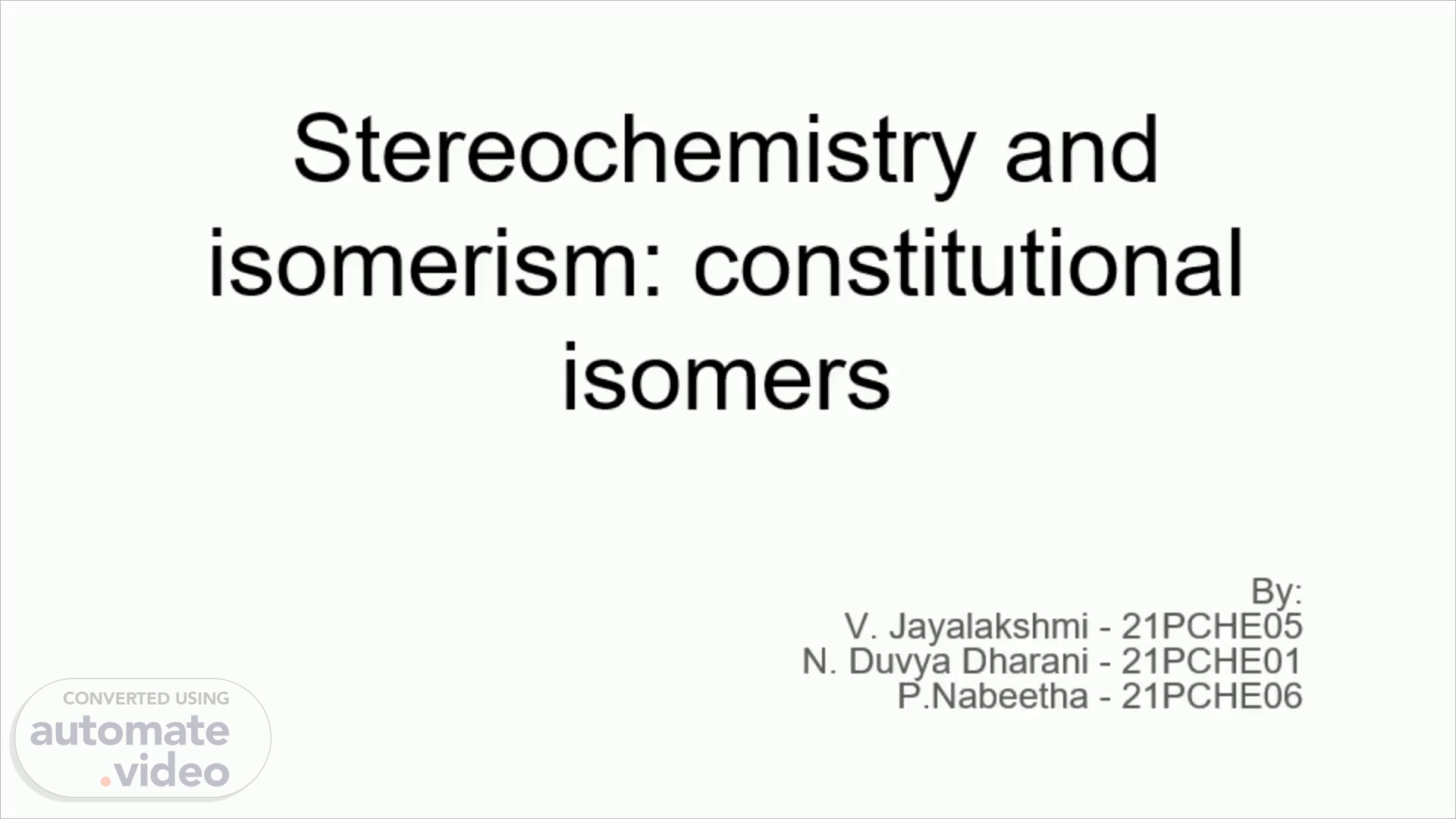
Page 1 (0s)
Stereochemistry and isomerism: constitutional isomers.
Page 2 (11s)
Emergence of stereochemistry of coordination compounds:.
Page 3 (32s)
Denken wir nns das Metallatom Zentrum dcg ganzcn Systems, so könncn wir eechR mit denselben verbundeno Molekiile am ein— fachRtcn in dio Ecken cines Oktacdors vorlcgon. Ex frtigt *ich abcr. zn wclcben Folgerungen dicso Annnhmc mhrt, und 0b diese Folgerungen in den •nuntme.hen eine Stiitze findcn. Dcnken wir uns zunächst ein MolekUl (M(Nkt•)•) also in Ecken Oktaeders Ammoniakmoleküle, im sech*ten einen Saurerest. Fig. 1. Fig. 2. Wir ntiissen gelangcn. adso SulEtitnicrcn wir in dcmselben ein Ammoniakmolekül durch •inen Siiurcrest, so können wir dies auf zwei At-ten t.bun. Eniweder könncn wir das zum Silurerndikai axial gelcgcne Ammonink- molckül snb8Utuieren, Oder wir könncn eines der vier mit ihm an gleichcn Kanten des befindlichcn Ammoniak— nyolekole subsUUderen, wie folgende Eiguren zeigen wet-den. x Yig. 3. isomereu Molckütkomplexen (M x:).
Page 4 (1m 5s)
D" unter diner Vorsuuetzung •ich ergebende Yodell ist jedocb, stereochemisch gesproehen, ein uymmetritchu, d. h. kun in *Tei raumlichen Anordnungen, die oich verbdt•n vie Bild and Spiqelbild und die nicht zur Deckung gebracht verde könneo, rerden. Der gewöhnlichen Asymm&ie bd Molehle, die behnntlich die mgenannte Isomerie i" der Tiakelu Isomerief•ll. nicht rrgldohb•r, die hit* ode link' •agmrdnetøn Gruppierangen (2 iden&ah dud; warde die obigø Isomaie Yielmehr uin nit organisaber Doppel.riaortemø, z. B. der Elgenden Art: qcE.s—--CE. NCE,-.-.-CK.
Page 5 (1m 29s)
Need for Inorganic stereochemistry:. In earlier days Stereochemistry of coordination compounds were taken for granted Coordination geometry with more than four coordination number has rich stereochemical potential Organic stereochemistry - coordination number with four for carbon Need for Inorganic stereochemistry Several new advancement in stereochemistry of coordination compounds Ex: enantioselective catalysis, bioinorganic chemistry, supramolecular chemistry.
Page 6 (2m 27s)
Isomerism:. Isomers are two or more compounds that have the same chemical formula but a different arrangement of atoms. Because of the different arrangement of atoms, they differ in one or more physical or chemical properties. They two classes of isomers are: Structural or constitutional isomers - differ in connectivity Stereoisomers or configurational isomers - same structure but differ in some other way of arrangement of atom in space.
Page 7 (2m 59s)
All isomers of a molecule no Constitutional Isomers Is the connectivity the sarne ? 1 yes Stereoisorners no Enantiomers Is tlr mirror image congruent to the molecule itsself ? 2 yes Diastereomers.
Page 8 (3m 34s)
Types of constitutional isomerism Ionization isomerism Ionization isomers are the compound where a given charged ligand is either coordinated to the central metal or presentas counter in the lattice Example: Hydrate isomerism Water is the common ligand in the first coordination sphere but it is also easily bound in the crystal through hydrogen bonding.
Page 9 (4m 9s)
Example: The best known example are Cr complexes Ligand isomerism An isomerism which is fairly frequent is ligand isomerism In this case the coordination unit have the same stoichiometric composition And they are same molecular weight.
Page 10 (4m 51s)
Example : Another example is three di nuclear complex.
Page 11 (4m 59s)
Coordination isomerism Coordination isomerism occur if at least two metal are present which accommodate at least different kinds in their coordination sphere Example:.
Page 12 (5m 29s)
LINKAGE ISOMERISM:. Linkage isomers occur with ambidentate ligands It could also occur with if the chelating ligand is bound only as a monodentate ligand.
Page 13 (6m 15s)
Examples: NO2-, SCN-, CN-,DMSO,Substituted pyridines,etc. 1. [CO(NH3)5(NO2)]Cl2 Linkage isomers complex ion :(NH3)5(NO2)]2+.
Page 14 (6m 30s)
References:. Alexander Von Zwelewsky , (1996). Stereochemistry of coordination compounds,. Newyork , Jhon Wiley & sons Coordination compounds, NPTEL James E. Huheey , (2007). Inorganic chemistry – principles of structure and reactivity, (4 th edt ), New Delhi : pearson education limited print.